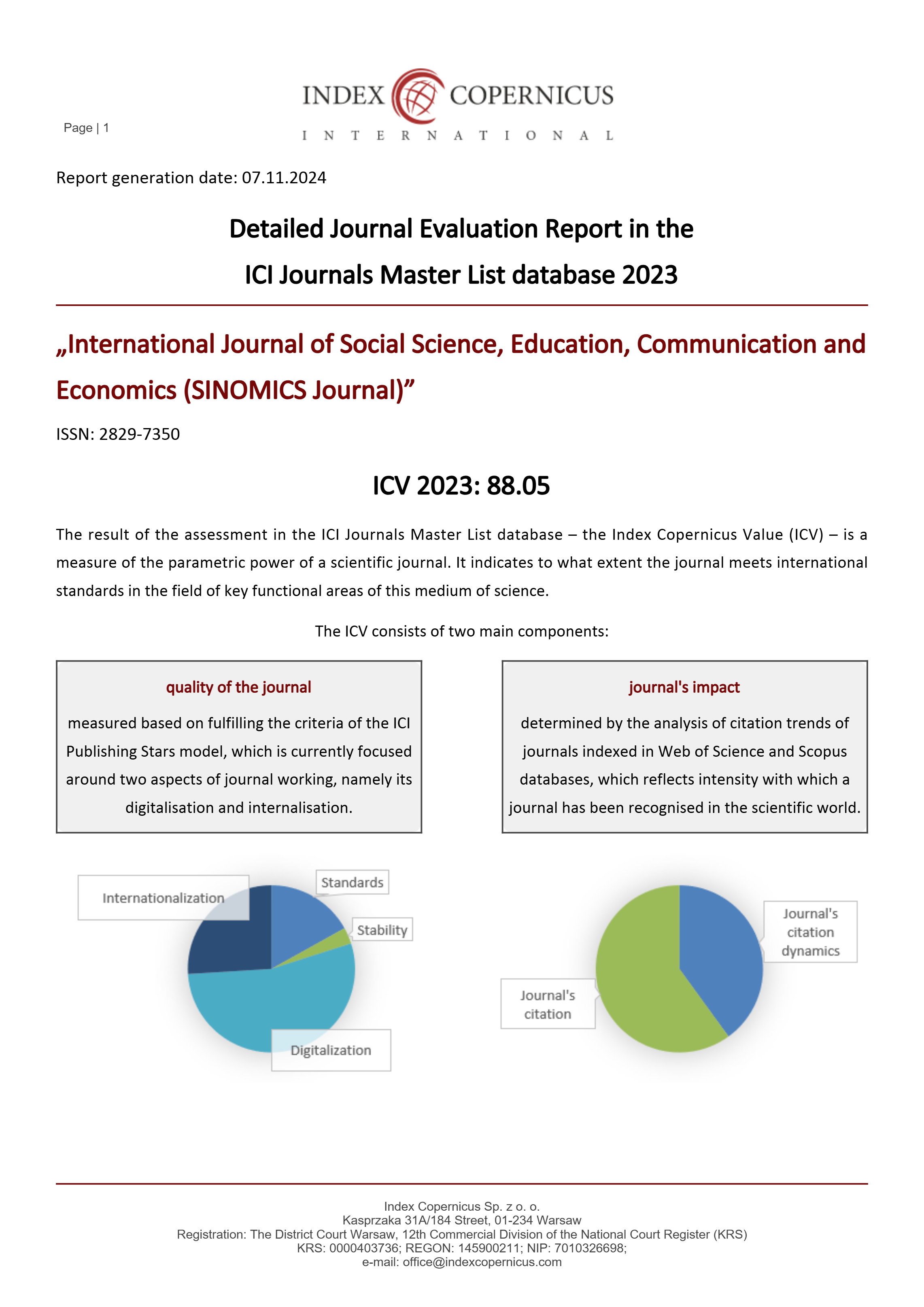Relationship Of Body Image and Coping Behavior with Social Anxiety in Early Adult Women at RW 021 Pesona Anggrek Harapan Housing
Main Article Content
Muhammad Nurfaizi Ismail
Diandha Rama Dhanti
Dinaranda Rahmadhanti Widyaputri
This research is quantitative research that aims to determine the relationship between body image and coping behavior with social anxiety in early adult women at RW.021 Pesona Anggrek Harapan Housing. The population in this research amounted to 140 subjects with 103 samples. The sampling method in the third study was Sample Random Sampling. The instrument of this study uses three Likert scale models, there are body image scale, coping behavior scale and social anxiety scale. The result of the analysis technique used was bivariate correlation, eta test, and dummy test. The result of the analysis data with bivariate correlation obtained a correlation coefficient (x1y) of r = -0.198; p = p<0.05 that there was a negative significant between body image with social anxiety , on the result of the eta test obtained a correlation coefficient (x2y) Fcount 9.3 and Ftable 0.02 that there was a positive between coping behavior with social anxiety, and then the dummy test result obtained correlation coefficient (R) of 0.216 and the coefficient of determination (R2) of 0.047 and p = 0.042 Which mean the relationship between body image and coping behavior with social anxiety.
Asri, D. N. dan Setiasih. 2004. Penerapan Metode Akupuntur pada Wanita Penyandang Obesitas. Anima: Indonesian Psychological Journal, 19, 3, 286-296.
Cash, T. F. & Smolak, L. (2011). Body images: A handbook of theory, research, and clinical practice. New York: Guilford Press.
Dayakisni, T & Hudaniah. (2009). Psikologi Sosial. Malang: UMM Press.
Eva Astiti, Erna Ipak Rahmawati dan Siti Nur’aini (2015) Hubungan antara Strategi Coping dengan Kecemasan pada Mahasiswa Baru di Universitas Muhammadiyah Jember. Jurnal
Hurlock, E. B. 2006. Psikologi Perkembangan, Suatu Pendekatan Sepanjang Rentang Kehidupan. Jakarta: Erlangga.
Kuncono Teguh Yunanto. (2016). Aplikasi Komputer Psikologi. Jakarta: Universitas Persada Indonesia Y.A.I.
La Greca, A. M, Lopez, N. (1998). Social anxiety among adolescents: Linkages with peer relations and friendships. Journal of abnormal Child Psychology. Vol.26(2):83-94.
Lazarus RS., Folkman S. 1984. Stress Appraisal and Coping. New York: Springer Publishing Company.
Melliana, S.A. (2006). Menjelajah tubuh. Perempuan dan mitos kecantikan. Yogyakarta: LKIS
Mohammad Khasan (2018). Perilaku Koping Waria (Studi Fenomenologi Kasus Diskriminasi Waria Di Surakarta). Jurnal Sains Psikologi, Jilid 7, Nomor 1, Maret 2018, hlm 99-106
Monks, F. J., Knoers, A. M. P., Haditono, S. R., 2004. Psikologi Perkembangan Pengantar Dalam Berbagai Bagiannya. Yogyakarta: Gadjah Mada University Press.
Nainggolan. T (2011) Hubungan Antara Kepercayaan Diri dengan Kecemasan Sosial Pada Pengguna Napza: Penelitian di Balai Kasih Sayang Parmadi Siwi. Jurnal Sosiokonsepsia, Vol. 16 No. 02, Tahun 2011
Olivarez, Jose. (2005). Social Anxiety Scale for Adolescents (SAS-A): Psychometric in a spanish-speaking population. International Journal of Clinical and Health Psychology. Vol. 5, No. 1.
Putri Khaira (2018). Hubungan Antara Self Esteem Dengan Body Image Pada Remaja Pria. Skripsi
Santrock. (2011). Life-Span Development: Perkembangan Masa-Hidup. Edisi 13. Jilid 2. Alih Bahasa: Widyasinta Benedictine. Jakarta: Erlangga.
Saifuddin, Azwar. (2015). Reliabilitas dan validitas. Yogyakarta: Pustaka Pelajar.
Sarafino, Edward P., Timothy W. Smith. 2011. Health Psychology Biopsychosocial Interactions Seventh edition. United States of America.
Sarwono, S.W. 1992. Psikologi Lingkungan. Jakarta: PT Grasindo.










